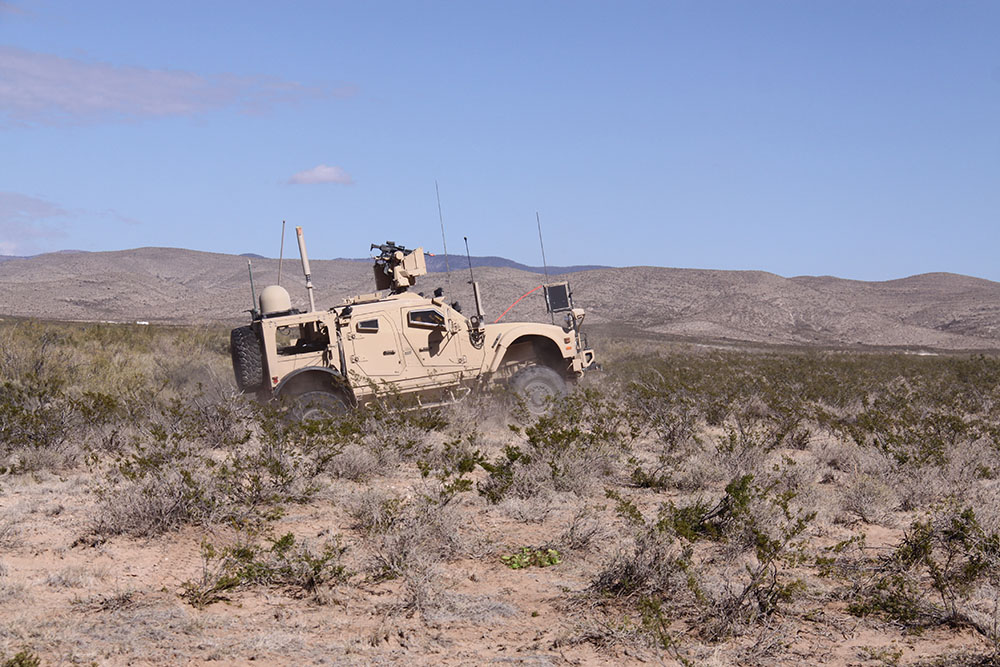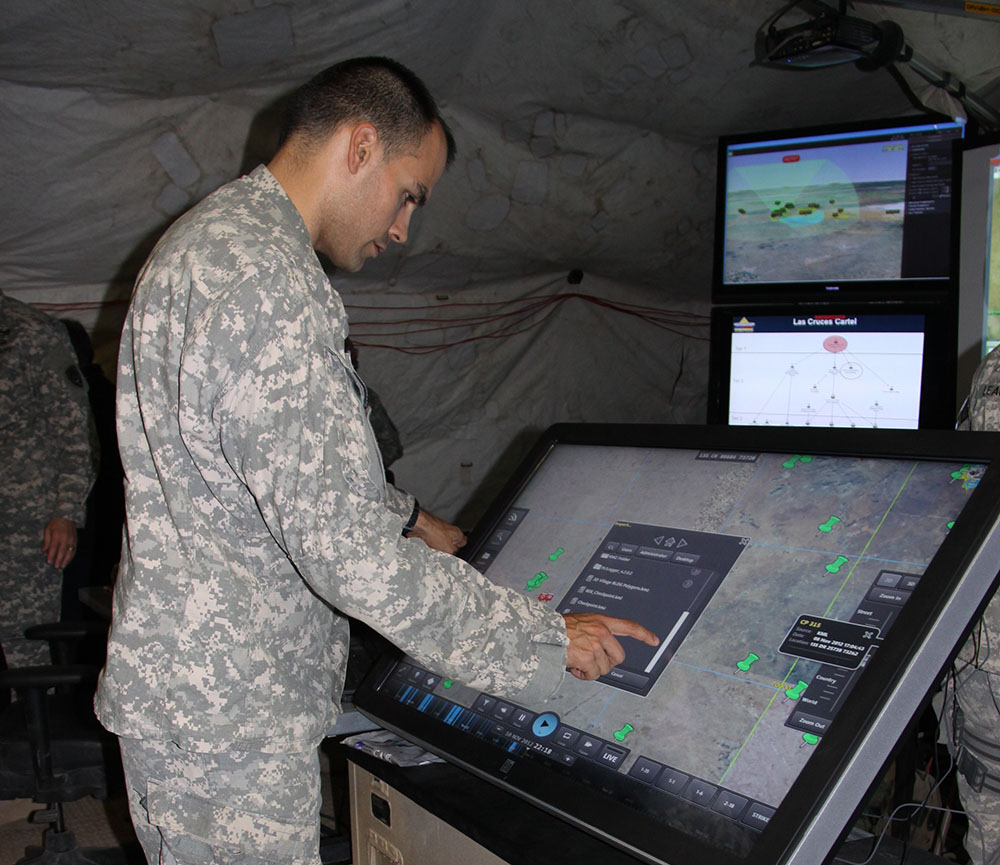
Pentagon, Army realign radio programs, stand up Joint Tactical Networking Center
By Mr. Kris Osborn and Ms. Claire Heininger
To provide needed communication capabilities to Soldiers, the Army has placed significant emphasis on advances in tactical radio technology aimed at driving industry innovation in hardware while leveraging years of government investment in software.
In recent months, DOD transitioned the Joint Program Executive Office Joint Tactical Radio System (JPEO JTRS), reassigning its key hardware programs to the Army and Navy. Additionally, the Joint Tactical Networking Center (JTNC) was established to provide secure joint tactical networking applications that can operate in a variety of hardware transport solutions through an affordable, government-controlled open architecture.
This effort will leverage the considerable technological progress achieved over the past decade of JTRS development while harnessing industry’s ability to develop, build, and deliver cost-effective hardware solutions. Hardware will be engineered to use low- and high-capacity waveforms that facilitate efficient and secure sharing of voice, video, data, and imagery across the force in real time, to provide warfighters on the battlefield with the right information at the right place, on time for mission success.
Interoperability is at the heart of the JTNC effort to support secure networks. These networks are, by design, capable of providing forward-positioned forces with terrestrial and aerial tier communication networks that can function without satellite networks or a fixed infrastructure.
The radios are engineered to function as routers as well as radios. This allows the radios to serve also as nodes in an extended mobile ad hoc network, connecting dispersed units on the battlefield that otherwise would be disconnected by line-of-sight challenges such as mountainous terrain.

The NIEs are key to evaluating the requirements for a mid-tier radio within the network architecture. Here, a Mine Resistant Ambush Protected All-Terrain Vehicle is equipped with components of Warfighter Information Network – Tactical Increment 2, the Army’s mobile network backbone, during NIE 13.1 in fall 2012. (U.S. Army photo by Claire Heininger)
TRANSITION TAKES SHAPE
To implement DOD’s recommendations, the Army assigned management of JTNC and several radio programs to the Program Executive Office Command, Control, and Communications – Tactical (PEO C3T).
PEO C3T has assigned a Project Manager (PM) Tactical Radios, whose office oversees a Product Manager Handheld, Manpack, and Small Form Fit (HMS) radio and a Product Manager Network Systems, managing current force and commercial-off-the-shelf (COTS) radios.
The Airborne Maritime/Fixed Station (AMF) and Mid-Tier Networking Vehicular Radio (MNVR) programs will continue to be led by their respective project managers until their next assignment, at which time they will become the responsibility of the PM Tactical Radios team.
With the technological advances in the commercial radio market and the maturation of nonproprietary waveforms, such as Soldier Radio Waveform (SRW) and Wideband Networking Waveform (WNW), the AMF and MNVR programs have been restructured as Non-Developmental Item (NDI) programs. The NDI designation means that the programs will seek to meet requirements by identifying and integrating technically mature COTS hardware solutions—consisting of various platform, weight, battery power, and size configurations—that can port waveforms housed in JTNC’s Information Repository.
The AMF NDI effort consists of two separate developmental radio programs: the Small Airborne Link 16 Terminal for Apache aircraft and the Small Airborne Networking Radio, which is designed for the Gray Eagle Unmanned Aircraft System and the Apache, Chinook, Black Hawk, and Kiowa helicopters, according to Navy CAPT Nigel Nurse, AMF Program Manager.
“We can tap into the hardware that has been developed over the last 10 years within industry and develop a new, improved radio,” Nurse explained.
Both AMF radio programs are slated to enter low-rate initial production (LRIP) by the fourth quarter of FY14.
The MNVR, a vehicle-based radio that will include a minimum of two channels and will use SRW and WNW, emerged from the former JTRS Ground Mobile Radio effort. The Army released a Request for Proposal in August 2012, and subsequently conducted laboratory and field evaluations of the radios submitted by several industry candidates. Network Integration Evaluation (NIE) 13.1, which took place in October and November, was also used to evaluate the requirements for a mid-tier radio within the network architecture.
The Army is also moving forward with the HMS program, a key element of its effort to network small units with Soldiers by providing critical information at the lowest echelons. The service is fielding the HMS Rifleman Radio as part of Capability Set (CS) 13, the first integrated package of communications technology to emerge from the NIE process. (See related article, Page 28.)

Providing warfighters on the battlefield with the right information at the right place, on time for mission success is at the heart of the Army’s efforts to bring together industry innovations in hardware and years of Army investment in software, and thus advance tactical radio technology. Here, a Soldier from 2nd Brigade, 1st Armored Division uses a touchscreen-based tool designed for mission command planning at various echelons across the brigade combat team, during NIE 13.1 in fall 2012. (U.S. Army photo by Claire Heininger)
Carried by platoon, squad, and team-level Soldiers, the Rifleman Radio provides a self-forming, self-healing wireless voice and data network for tactical echelons on-the-move. Rifleman is a single-channel radio configured for use with mobile computing devices like Nett Warrior, a handheld situational awareness tool with software and digital map displays showing key information, such as nearby terrain and force positions.
“This system provides critical situational awareness for dismounted leaders, enhancing both effectiveness and survivability of the force,” said LTC Mark Stiner, Product Manager HMS.
The Army has procured 3,726 HMS Manpack radios for mounted and dismounted operations under a second LRIP order. The Army accepted delivery of 100 of these two-channel, software-defined radios, which are designed as gateways allowing lower-echelon Soldiers carrying Rifleman Radios to connect to the network at platoon level and above. “The Manpack has the capability to bridge legacy networks to SRW networks, allowing dismounted leaders with the Rifleman Radio to communicate with legacy-equipped units and to access beyond line-of-sight satellite networks,” said COL Russ Wygal, PM Tactical Radios.
“The Manpack will enhance current communication capabilities by allowing small units in austere environments to exchange voice and data information with their higher headquarters, without having to rely on a fixed infrastructure.”
For the full-rate production (FRP) phases of the Rifleman and Manpack programs, the Army is planning for a full and open competition. Through the NIEs, the Army evaluated the maturity of emerging industry capabilities with the potential to meet HMS requirements and has taken steps to include these capabilities in its FRP. Such steps are in keeping with the strategy to leverage industry advances and competitive pricing to evaluate and purchase radio hardware at a quicker pace and lower cost than in the past.
CONCLUSION
Technical advances in the commercial software-programmable radio market have placed low-cost, effective communication hardware solutions within reach.
The restructuring of the JTRS program and the creation of the JTNC are intended to increase competition, decrease costs, and provide secure, interoperable communication solutions to Soldiers and deployed forces across a wide range of platforms.
For more information, go to http://jtnc.mil/.
MR. KRIS OSBORN is a Highly Qualified Expert for the Assistant Secretary of the Army for Acquisition, Logistics, and Technology Office of Strategic Communications. He holds a B.A. in English and political science from Kenyon College and an M.A. in comparative literature from Columbia University.
MS. CLAIRE HEININGER is a staff writer for Symbolic Systems Inc., supporting Program Executive Office Command, Control and Communications – Tactical. She holds a B.A. in American studies from the University of Notre Dame and has written on numerous Army network technologies, policies, and events.
In celebration of the 25th anniversary of the Army Acquisition Corps (AAC), Access is publishing articles that highlight milestones throughout the history of the AAC. Each article marks a moment in acquisition excellence.
This article was published in Army AL&T Magazine, January – March 2013.







